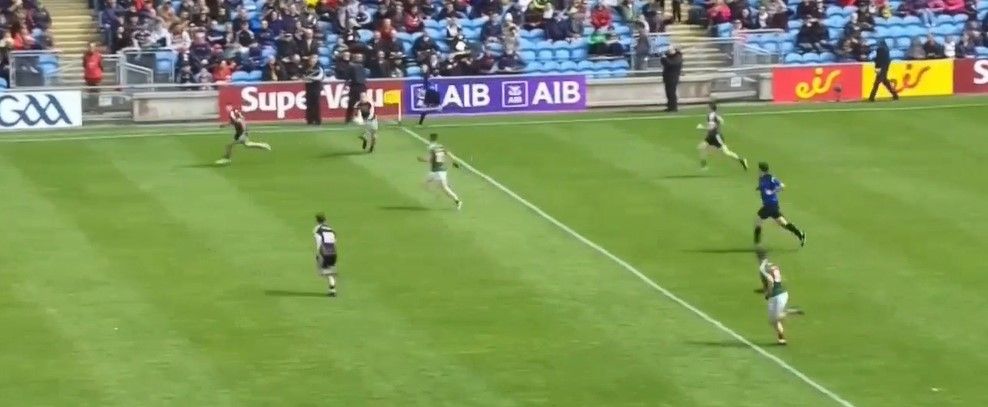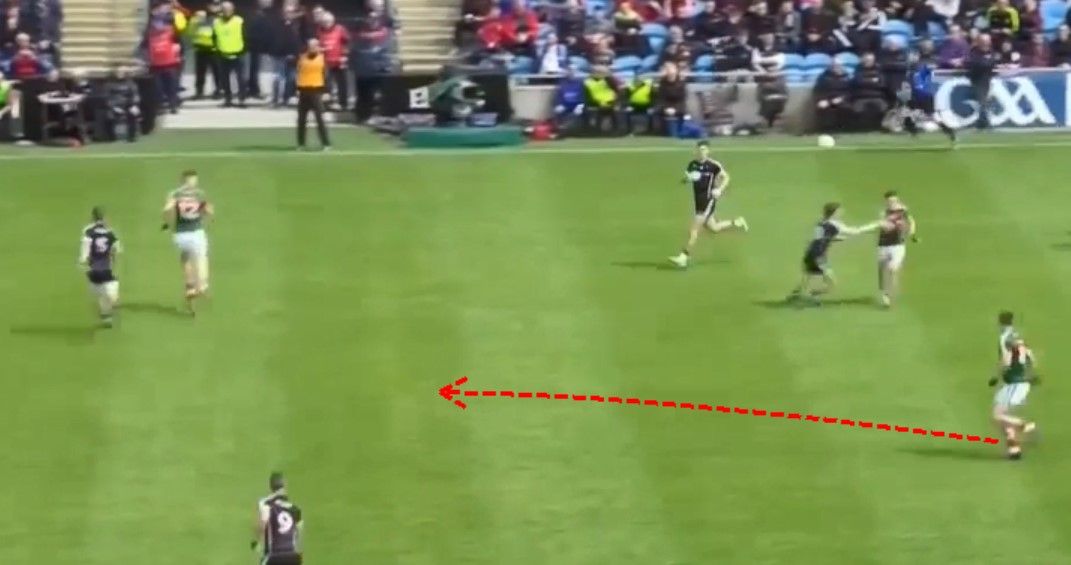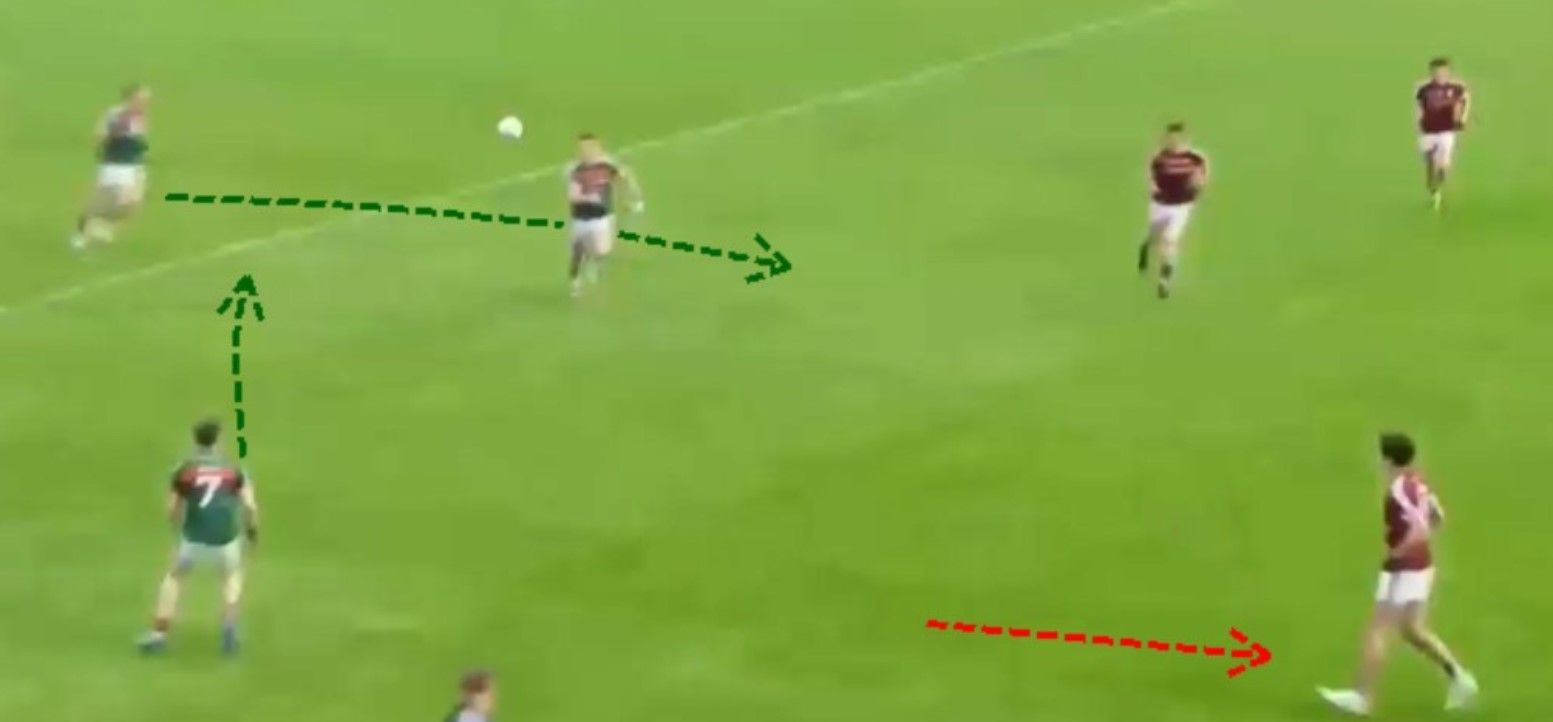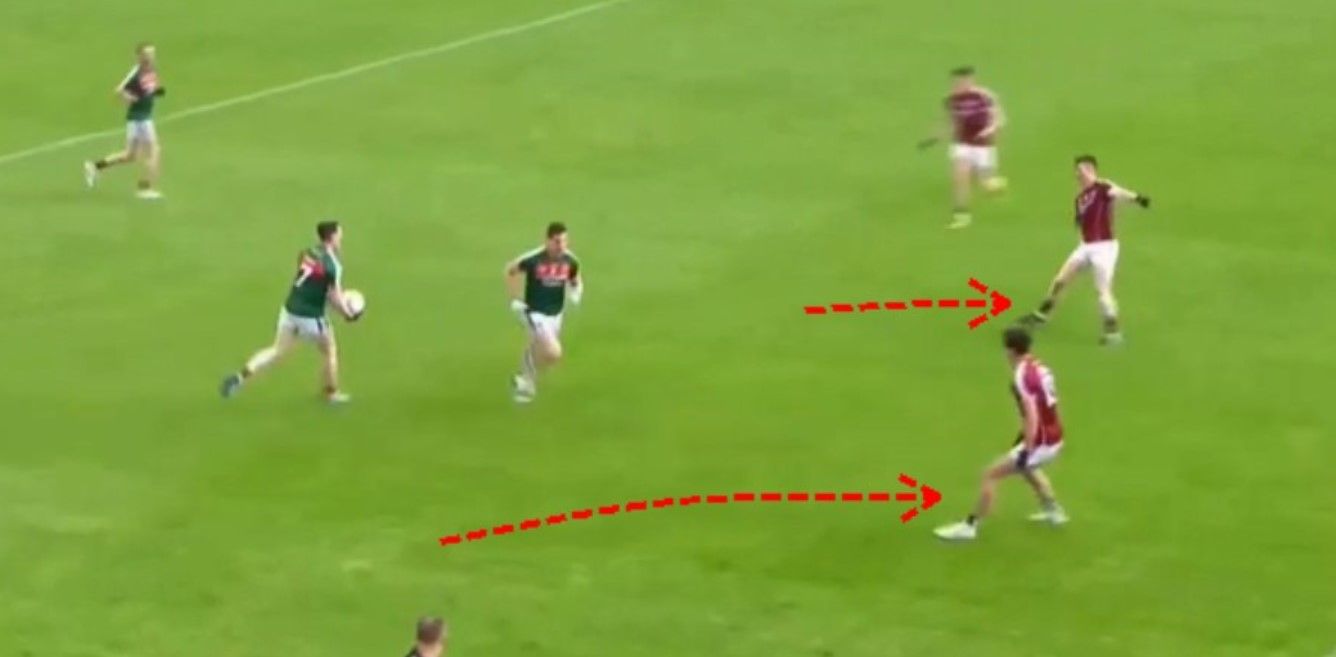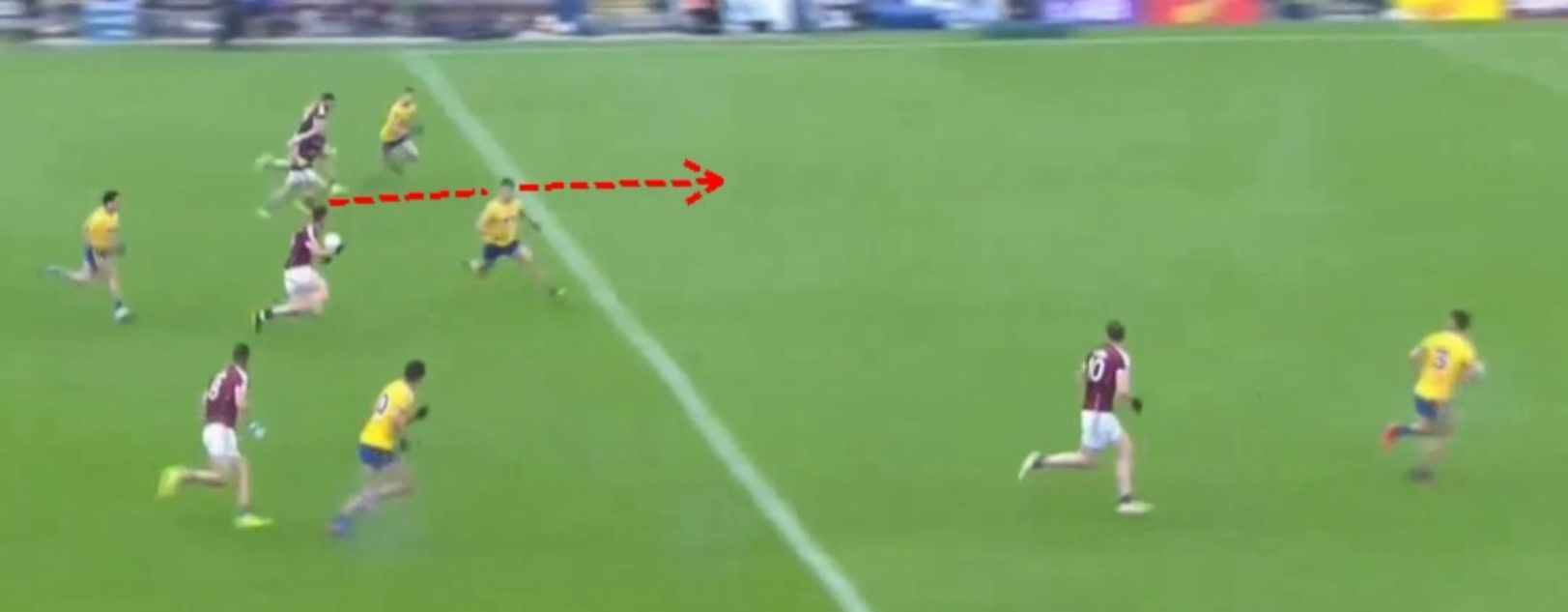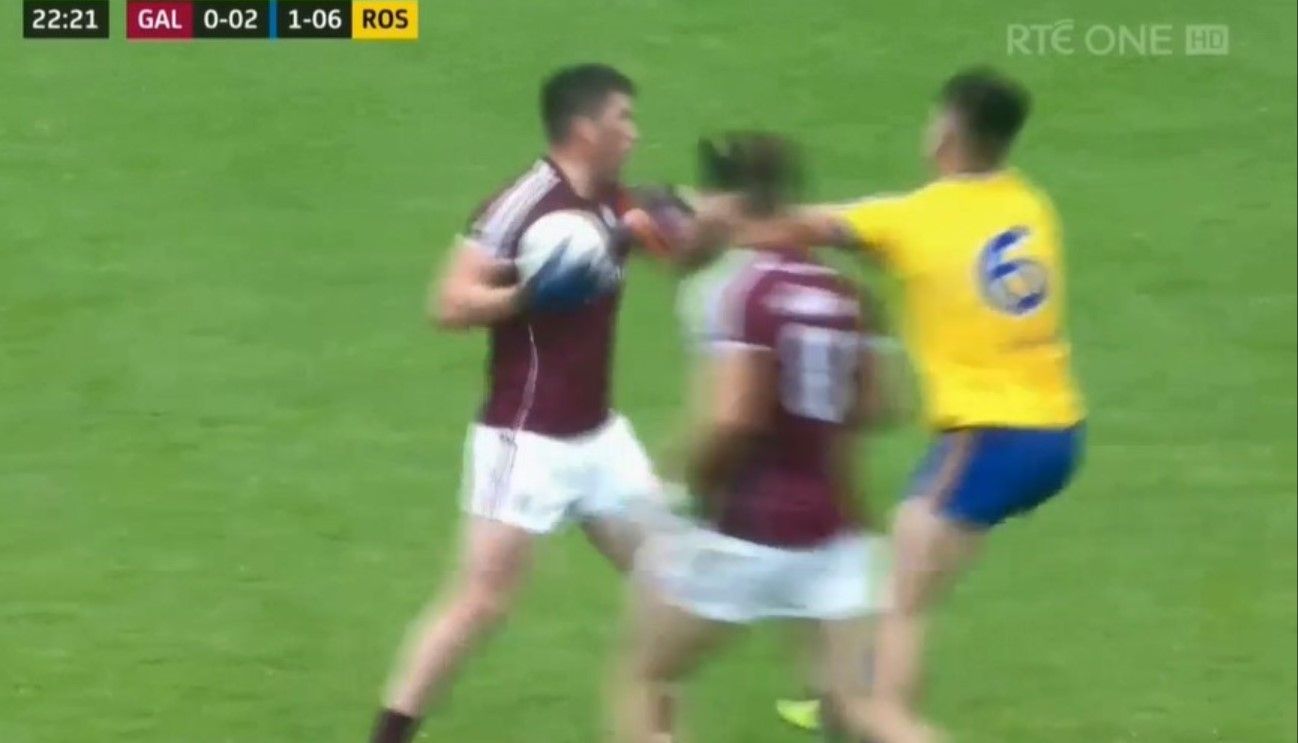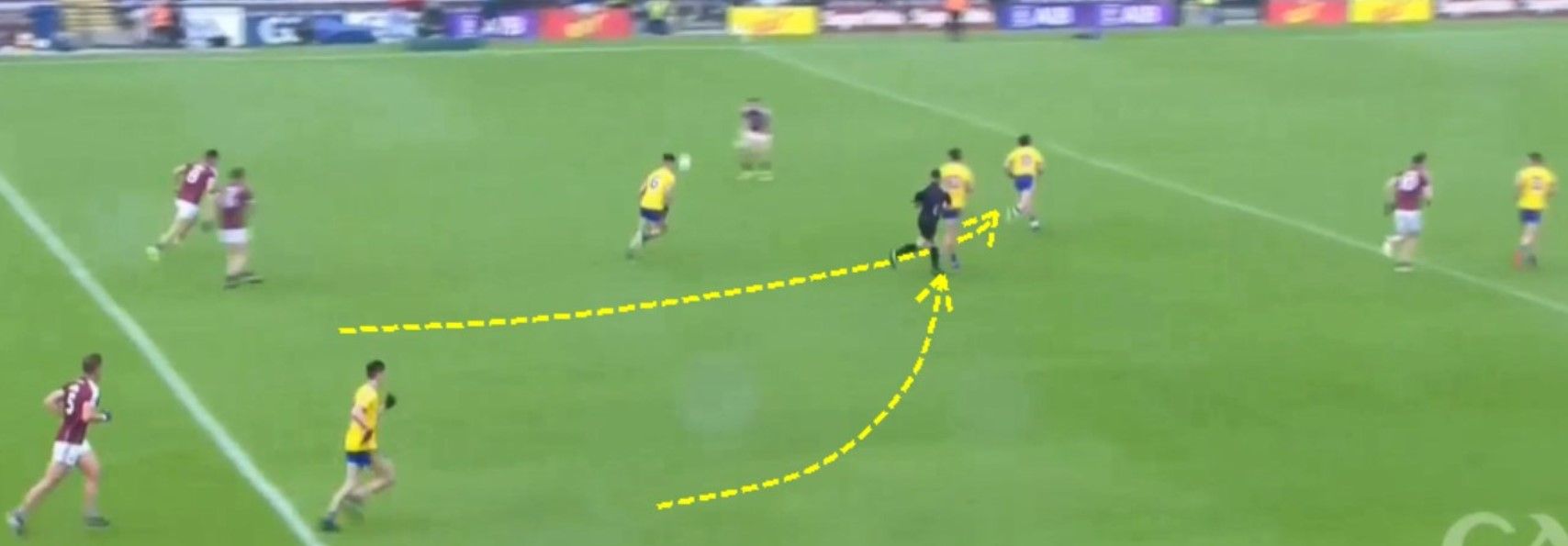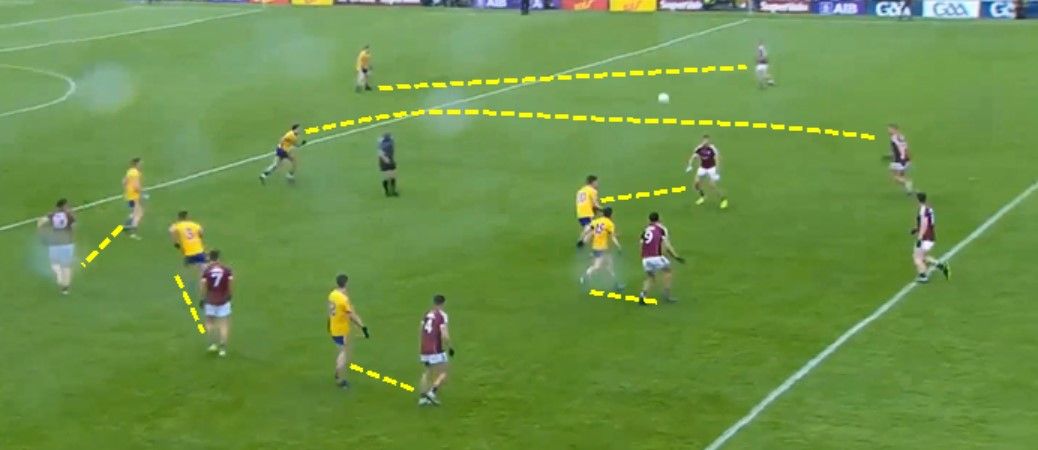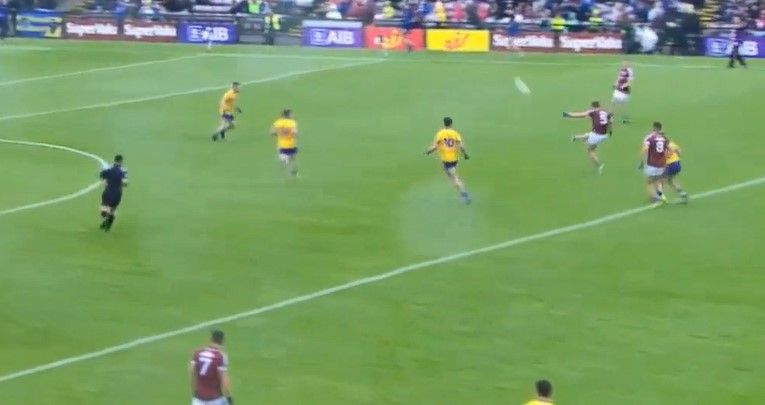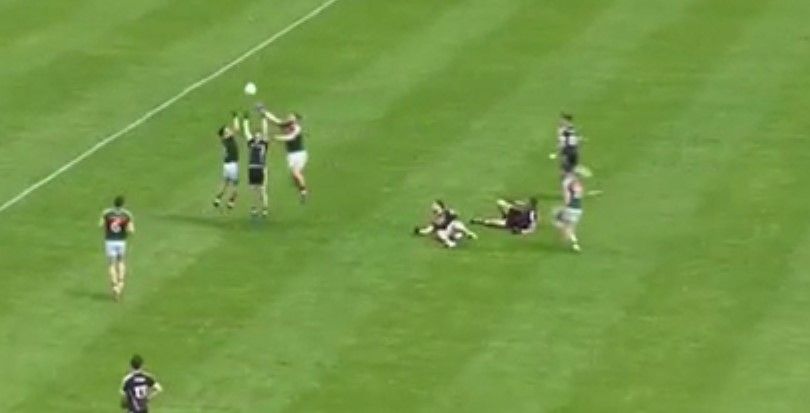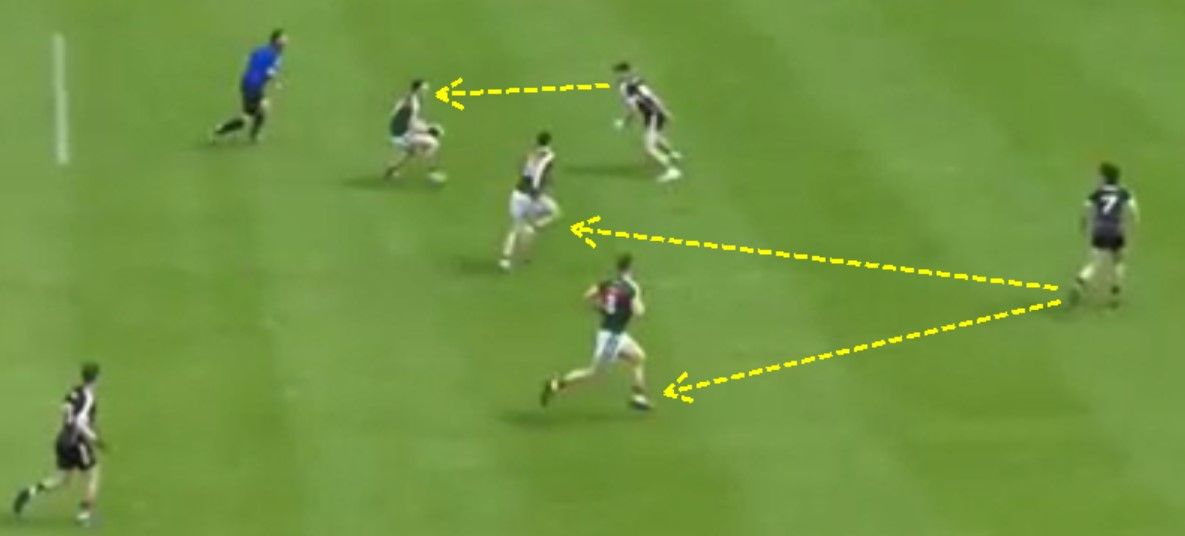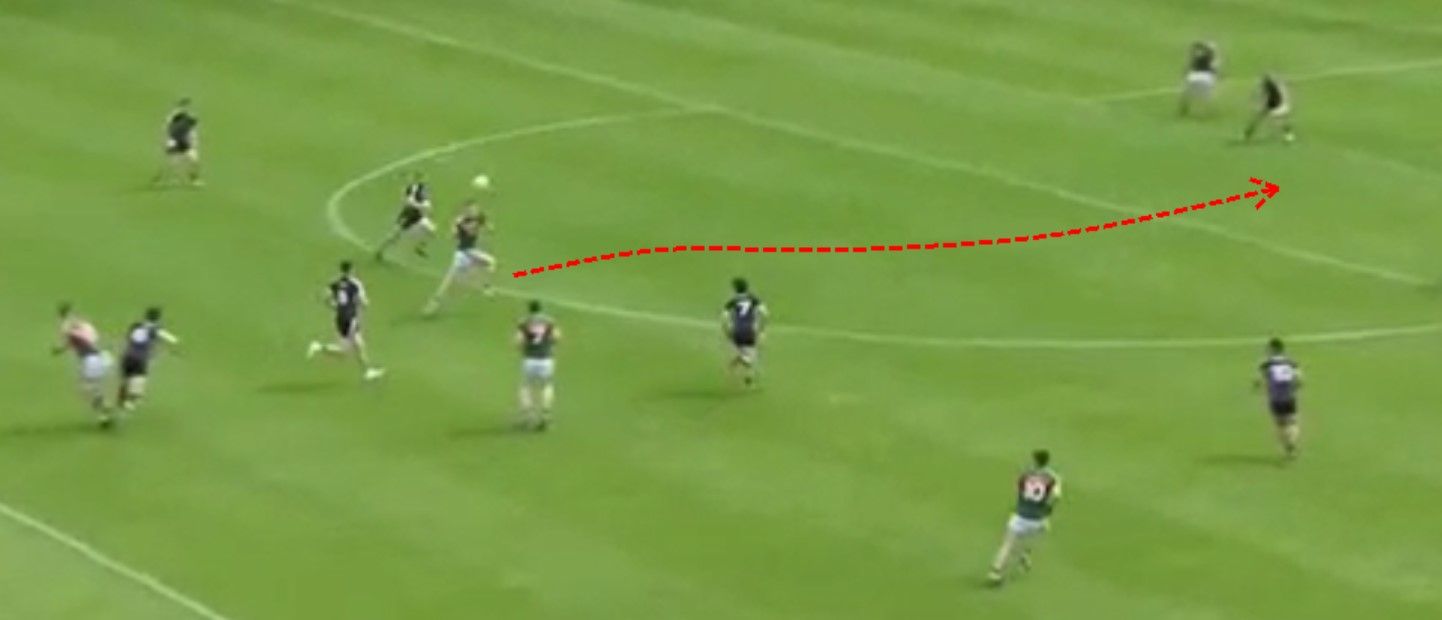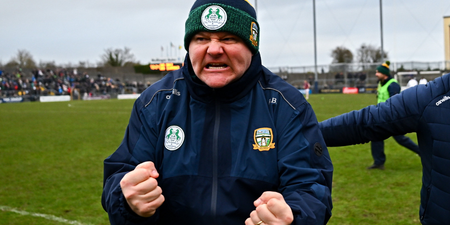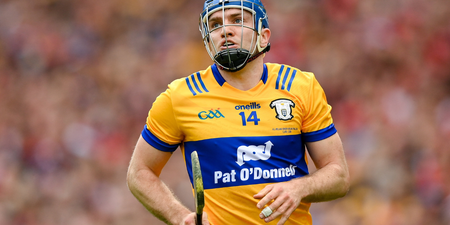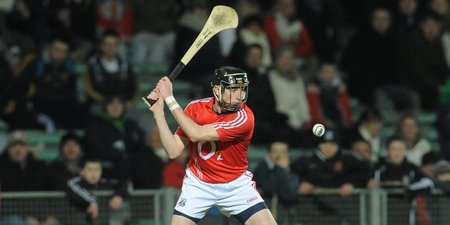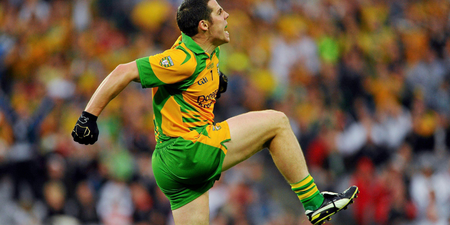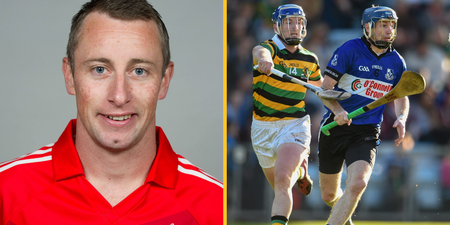Viewing Sunday’s all Connaught quarter-final clash we have to start from the default position that last year’s All-Ireland finalists, Mayo, are favourites.
They’ve been there, done that, in Croke Park, and they have the better players. But are their players so much better as to justify 3/1 odds against the Connaught champions? Connaught champions who, from where I was standing, tactically dismantled Galway with military like precision.
I’m not convinced the “Galway over-confidence theory” holds much water.
The season so far
Mayo’s bottle has passed sturdy tests this year as they’ve etched out results and dragged one from the fire in their route through the back door. However, in statistical terms, all appears far from rosy in the garden. In raw terms, two extra-time victories are insignificant in terms of what we can expect over 70 minutes this weekend and beyond.
In summary, over 70 minutes, their championship record this year reads – played five, won two, drew two, lost one. This is against sides ranked GAA adapted ELO scale as eight (lost), tenth (drew), 14th (won), 20th (won) and 21st (drew) in the country.
Roscommon, having floundered in the national league with a huge amount of new faces to blend into the panel, have since wiped the floor with the Galway side who’ve beaten Mayo two years running. But they’re 3/1 outsiders. Am I missing something?
How Mayo Attack
I wouldn’t argue that Mayo have superior individual players, but I’m not convinced that they’re as far superior as we may think.
In this year’s Connaught Championship, a striking pattern appears to have emerged. They are the masters of the “one-two-three”. This is where they break the line off the back of giving a hand-pass to one player, who quickly shifts it onto a third player who breaks the line, with the opposition typically drawn to the player who received the first pass.
In Mayo’s game against Sligo, 1-8 of their 2-14 came off the back of such a line break. Dublin, who they twice went toe to toe with in last year’s All-Ireland finals, are chronic offenders in this regard, from a defensive point of view.
The majority of their players fall for the “one-two-three” hook line and sinker every time. But how do Mayo cope with sides who may not have Dublin’s raw ability, but don’t tend to fall for the “one-two-three”?
Cillian O’Connor (1) passes to Fergal Boland (2)
And Séamus O’Shea (3) breaks the line for the Mayo point
Galway, for example, were clearly systematically set up to stop this. Even up to Keith Higgins’ 26th-minute red card, albeit into the wind, Mayo had scored three points and one somewhat lucky goal which came off the back of the ball rebounding off the upper post.
From start to finish in the Galway versus Mayo game, Galway didn’t fall for a textbook “one-two three” all game long. Mayo struggled. Mayo are set up to execute the “one-two-three” line-break
Mayo are set up to execute the “one-two-three” line-break
But Galway simply step off and deprive them the opportunity
Monaghan are also one of the most methodical sides in the country when it comes to not being drawn into being beaten by the “one-two-three”. In the national league this year, Mayo struggled, and were beaten, putting just 12 points on the board.
It remains to be seen how Roscommon cope with the “one-two-three” as Galway don’t/didn’t particularly apply it against them. Roscommon’s high pressing game lends itself to being caught out by it if a given player doesn’t have the head to make the split-second decision to drop off the man at the right time.
When Roscommon played Galway they manufactured the perfect blend of pressing high up the field at the right time, with knowing when to drop off en masse at the correct time. Crucially, they mastered the correctly timed foul in the middle third while delaying the opposition from taking the free, allowing them to get more men behind the ball.
Galway create the overlap
But Roscommon make sure to foul them
And systematically delay the free taker
Allowing defenders behind the ball
If they can impose this on Mayo, yet not get sucked into the Mayo “one-two-three”, which is looking more and more like Mayo’s life-blood, there’s every chance that this game will be balanced on a knife edge.
If they get all of these things right, they should keep man-on-man Mayo attacks to a minimum, and there’s no evidence that we can expect Mayo to break Roscommon’s blanket defence with more than a 30 percent attack to score ratio.
Kick-outs
There is one more key element which Roscommon will have to get spot on if they stand a chance – their own kick-out. Mayo will either dominate Roscommon and the game from here, or Roscommon could gain the significant edge required to etch out a victory.
Quite simply, Roscommon will have to do one of two things on their own kick-outs. They’ll have to get them off short, or win at least 60/40 long, if not more. Against Aidan O’Shea/Séamus O’Shea/Tom Parsons, even breaking 50/50 is optimistic.
The one place where they were statistically awful against Galway was on their own long kick-outs. They lost 4/6.
From the six they lost, they conceded four points, a 67 percent kick-out lost to point conceded ratio. It’s simply too much. Galway reeled off four points in a row from the 43rd minute from this source.
Roscommon are man-to-man as the kick-out lands
And look potentially exposed as soon as they lose the break
One Galway run and they’re in trouble
And Galway score without taking on a single defender directly
Mayo are typically at their most devastating when they win the opposition’s long kick-out. When they win them, they like to take the ball off the shoulder at pace and attack defences that aren’t used to being exposed man-on-man.
They scored 2-3 from this source alone from the seven they won against Sligo, a massive 129 percent kick-out to point ratio and they scored two points from the four they won against Galway, a 50 percent kick-out won to point ratio.
Mayo win the long Sligo kick-out
And drive quickly to create the over-lap
For Diarmuid O’Connor’s goal
All patterns suggest that if Roscommon go long, they’ll break even at best, and concede heavily to Mayo when they lose.
All patterns suggest they’ll simply have to get them off short.
On a dirty day on a pitch six metres narrower than Croke Park, they scored 1-2 off the back of five short kick-outs against Galway. When they get them off quickly, they attack at pace, like for their first goal that day. When they get them off slowly, they can “pick and poke” through the middle third as well as any side.
If Roscommon can get the short kick-out off, I’d be confident they have a better chance than most people expect, potentially, not far off 50 percent. If they don’t, there’s a good chance they’ll be massacred.
Mayo, however, are excellent at depriving the opposition the short kick-out, so expect a battle-royale in this regard.
Mayo’s long versus short kick-out kick to score ratio has been erratic, so it’s unclear how key it will be for them to get off short kick-outs, which David Clarke has improved hugely on this year. It’s safe assume that Roscommon will try to stop them, as against Galway.
Roscommon attack
It’s difficult to base too much regarding Roscommon’s attack on the Galway game, considering the poor conditions, but it’s worth noting that they scored 2-5 from the 13 man-on-man attacks they created (an extremely high amount of attacks in modern inter-county football) and two points from turning Galway over high up the field.
They scored a lowly eight points from 29 attacks into a blanket defence, a 28 percent attack to point ratio. You have to assume they won’t create so many man-on-man attacks against Mayo, and pressing high up the field in Croke Park is a taller order than in Salthill.
If they’re to win, stifling Mayo’s creativity will be key.
Conclusion
This all looks at the tiny details Roscommon will need to get right to beat Mayo. When it works for Mayo, they’re electric. The best scoring forwards on the field on Sunday will be Andy Moran, Cillian O’Connor and Diarmuid O’Connor. The two best footballers on the field in terms of pure raw ability will be Aidan O’Shea and Lee Keegan.
If, however, Roscommon can get off the short kick-out and get the ball into the attacking area, where Mayo can self-implode by giving away unnecessary frees and scores, if they can press high, yet successfully get men behind the ball at the right time, and not get sucked into the Mayo “one-two-three”, I’d make it a 50/50 game.
It’s a lot of “ifs and maybes”. But 3/1 odds? I don’t think the “ifs and maybes” are that unlikely.

